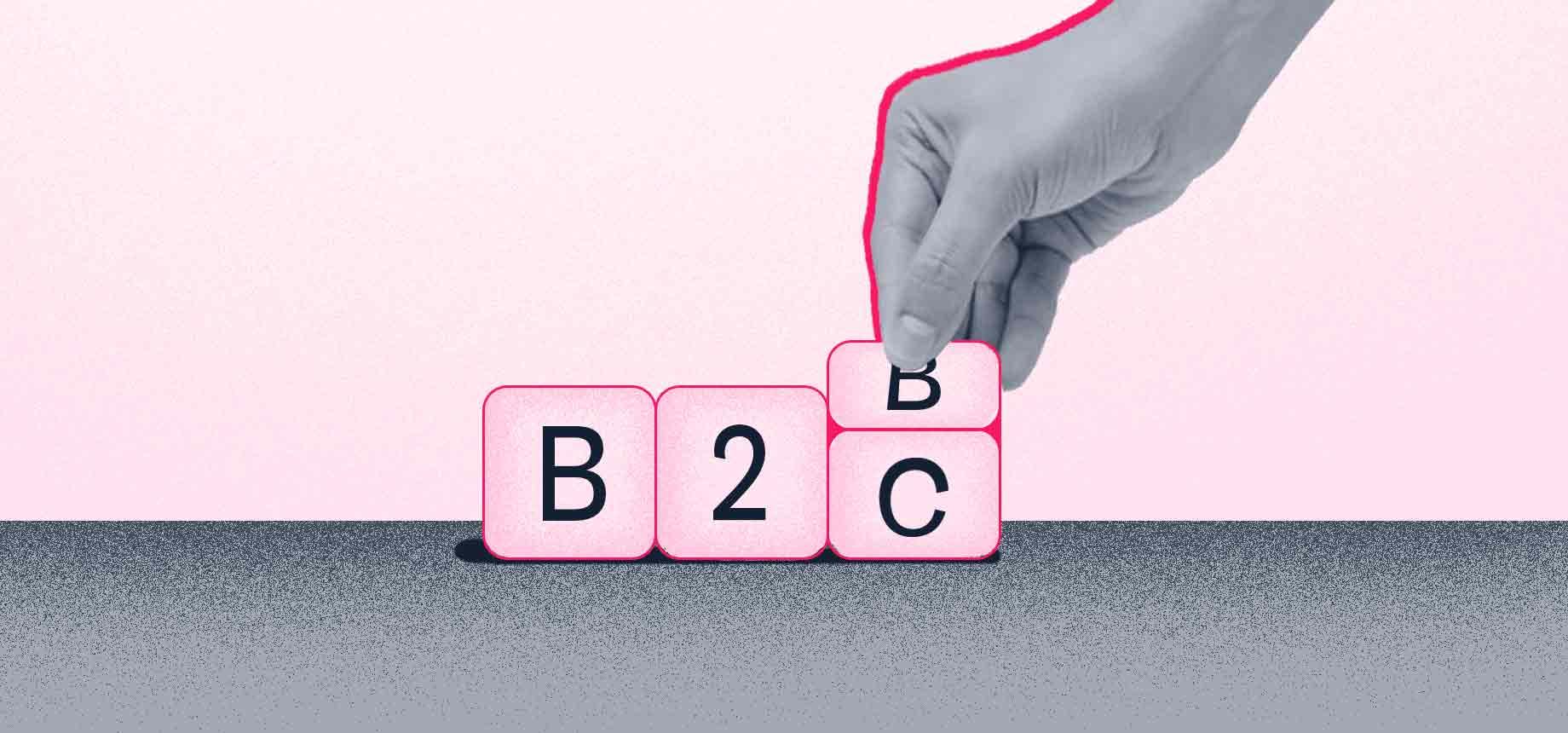Have you ever wondered about how each business model requires a different architecture and set of features? A website is the first point of contact for buyers. It should be designed in a way that the buyer can understand the business model at a glance.
That’s why it is important to tailor your website to your chosen business model. It will almost certainly impact your sales and the experience provided to your customers.
Before we assess how B2C and B2B commerce operations differ, let’s start with the definitions of the business models:
- B2B refers to "business-to-business". It is a business model focused on selling products or services to other companies. Nice examples of B2B ecommerce businesses are Unilever and Stanley Black and Decker, both with features like Customer Sign In, Form Builder, Price Tables, etc.
- B2C stands for "business-to-consumer". It is a business model focused on selling products or services to the end-consumer. Nice examples of B2C ecommerce businesses are C&A and Walmart Argentina, both with features like pick-up in-store, ship-from-store, social selling, etc.
Now that we’re all on the same page, let’s do a comparison on nine core aspects of any business.
1. Homepages
A B2B homepage is usually simple, with not much “pollution” on the page. What’s more, to move past the homepage, you can be required to sign in based on pre-registered account details.
By comparison, a B2C homepage is usually more attractive and also ungated. Discounts and special deals take up a huge part of the space, with flashy banners competing for your attention and often a menu navigation with countless categories and subcategories.
2. The checkout process
The methods necessary to execute a transaction in a B2C business are simple. The consumer adds the goods to the cart, enters discount coupons, checks the delivery address, pays and receives a confirmation that the transaction was successful.
By contrast, the checkout process for B2B may require upfront registration and live human support available at all times and it depends on the credit available for that specific customer.
Here’s an example of a B2C checkout:

And now here’s one for B2B:

3. Shipping methods
The order size for B2B is larger, making same-day delivery almost impossible. Usually, there are four main B2B shipping options: full truckload (FTL) freight carrier, less than truckload (LTL) freight carrier, warehouse pick-up and standard delivery.
Because the B2C order is significantly smaller, it almost certainly qualifies for standard and widely available delivery options. Merchants often integrate methods like same-day delivery, one-day delivery, scheduled time slot delivery and pick-up in-store.
4. Payment methods
A B2B company will often employ specialist payment methods. Because of high-value orders, security is the top priority. The payment options include: pay on credit, paper checks, credit card and invoice (i.e. boleto fatura in Brazil).
Comparatively, in B2C ecommerce, customers need a fast and convenient payment method. Options include credit and debit cards, mobile wallets the likes of Apple Pay, Google Pay and Samsung Pay and even buy now pay later (BNPL) options.
5. Market size and growth opportunity

As this graph from ResearchAndMarkets shows, the differences in market size and growth opportunity between B2C and B2B ecommerce are remarkable. By 2028, the estimated global B2B ecommerce market size will reach $25.65 trillion USD, while the global B2C ecommerce market size is anticipated to reach $7.65 trillion USD.
This shows an opportunity for businesses that currently operate only in the B2C ecommerce model.
6. Customer needs
B2B clients have the need to consult with multiple departments before closing a deal, while B2C consumers only have to consider themselves before purchasing. This makes the purchase decision process shorter for B2C, where the drivers are emotion and urgency.
Moreover, B2B customers usually search for the products using either a reference number or a technical name, whilst B2C customers search for keywords or product names.
7. Customer behavior
In line with the previous point, B2B buyers look at the long term, which means they spend more time researching and sourcing recommendations.
On the other hand, the B2C customer is more prone to impulse buying due to call to actions and appealing disclaimers such as “Last 2 items left”, “This promotion will end in 10 minutes” and “20 other people are looking at this item”.
8. Customer life cycle
B2B buyers are generally repeat purchasers, so organizations have to consider the longer buyer lifecycle and come up with ways to make future orders work seamlessly, too. For instance, features like repeat ordering and product recommendations based on past orders.
B2C consumers will often only place an order once, unless you create a loyalty program, subscriptions or offer a nice shopping experience the first time the customer browses your website.
9. Pricing
In commerce, B2C pricing is almost always consistent no matter who shops, aside from coupons or personalized offers.
On the other hand, B2B businesses have variable pricing tables, where prices fluctuate according to the buyer and purchase size. Digital quotes and storefronts with accurate pricing will both play a huge role in the process.
Other differences
Of course, these nine pillars of comparison don’t cover everything that goes into an online business. Here is a funnel illustrating some additional differences in the purchase process between B2C and B2B:

Why not have both?
We saw several different aspects between B2B and B2C ecommerce, which might make you think one is better than the other. But why not have both? Several brands have both B2B and B2C websites and there are many benefits of managing them all on one single ecommerce platform like many of our VTEX clients do.
If you’re interested to know more, keep an eye out for future content on the topic — or simply talk to one of our commerce experts right now.
Get in touch